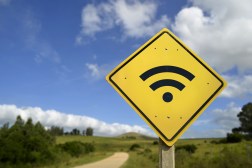Publicly owned broadband networks on the rise in U.S., research shows

The number of communities running publicly owned broadband networks has risen over the last three years, according to a report published Thursday by the Institute for Local Self-Reliance.
The report shows that since 2021, 47 new publicly owned networks have come online and more projects are underway. Before 2021, there were 400 municipal broadband networks serving 600 communities, according to the the institute. Those include conduit-only networks, institutional networks, open-access networks and municipal fiber-to-the home networks.
“The monopoly cable and telephone companies frequently claim that there are no problems with broadband in the U.S., even as millions of students cannot access the Internet from their homes, whether in rural or urban areas,” Christopher Mitchell, director of the institute’s Community Broadband Networks Initiative, said in a press release. “These cities remind us of the work that has to be done to make sure everyone can take advantage of modern technologies.”
Construction on the Waterloo Fiber network began in Iowa last summer after residents approved the city issuing general obligation bonds totaling $115 million to fund the three-phase construction project. City officials recently debuted their first limited fiber trail and plan to connect commercial customers in February. By 2026, the city expects to deploy affordable service with download speeds of 10 gigabits per second citywide.
A project in Knoxville, Tennessee, will create among the largest municipal broadband networks in the nation once it is completed. The massive fiber-to-the-home network is already offering service to some residents and businesses in Knoxville, but completion of the project is estimated to be 7-10 years out. Once the Knoxville Utilities Board finishes building the fiber network, it is expected to connect 210,000 households in the 688-square-mile service area.
“From the Midwest to the Deep South, East Coast to West, we’ve seen an incredible amount of new energy by cities over the last two years,” Ry Marcattilio, associate director for research with ILSR’s Community Broadband Networks Initiative, said in a press release. “Dozens of cities, ranging from five thousand and a hundred thousand residents alike have decided that enough is enough. Instead of pleading with or giving additional handouts to the monopoly ISPs, they’ve decided to invest in themselves. It’s exciting to see so much happening, especially since we know our numbers are not completely exhaustive as there are no doubt cities building networks that have not yet become active or reported service to the FCC.”






